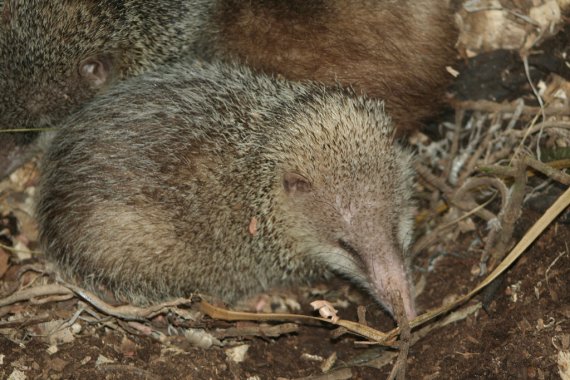A research team with Wageningen molecular biologist Ole Madsen published this result last week in the PNAS journal. As Madagascar has been isolated for almost ninety million years, it has become a refuge for many unique types of animals, such as large numbers of lemurs and tenrecs. Their ancestry has long been a bone of contention among scientists. One side in this debate says that the fauna of Africa, India and South America have common ancestors. These species were dispersed when the supercontinent Gondwana split up and isolated its inhabitants. Madsen’s genetic analysis gives a contradictory view which says that most of the ancestor species – coming mainly from Africa – arrived less than 60-70 million years ago and colonized Madagascar. This conclusion ties in with findings of previous smaller experiments. ‘But there will be more studies on this subject,’ says Madsen, a researcher at the Animal Breeding and Genomics Centre. ‘We are the first to have compared every animal species, and not just mammals or reptiles.’ Colonization probably took place via ‘rafting’, which involved moving across the waters along with floating tree trunks. Until 30 million years ago, this process was made possible by ocean currents. But a successful crossing was perhaps a rarity; the researchers found evidence for only 29 colonizations. Having settled down, the animals evolved into many new species. This was aided by the expanse of space on the island when a meteorite crash about 65 million years ago caused a mass extinction. Fossils show that the earlier species bear very little resemblance to the current inhabitants. To do the analysis, the researchers collected genetic material from as many present-day animals as possible in Madagascar, Africa and India. They unravelled the base sequences of two genes – RAG1 and BNNF – in order to do a comparison. They combined this with existing knowledge to reconstruct a family tree. Furthermore, they used the changes in genes as a ‘molecular clock’ from which they estimated when a common ancestor had arrived in Madagascar. However, this approach does leave several gaps. A number of animals on Madagascar – such as several hippopotamuses, aardvarks and herbivorous crocodiles – have become extinct only relatively recently. Since morphological characteristics were not considered, these animals were not taken into account. Madsen thinks that a more accurate picture could be obtained by studying more genes. ‘The general line will not change,’ says Madsen, ‘but details may.’
Madagascar’s fauna comes from Africa
Most of the animal species in Madagascar have descended from African ancestors, according to genetic analysis. Scientists have long debated on the origins of the many unique animals on this island.

